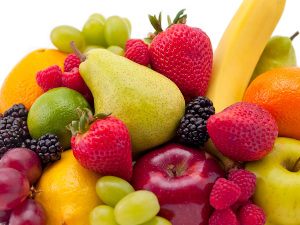Agronometrics in Charts: Mexican avocado exports reach unprecedented levels

In this installment of the ‘Agronometrics In Charts’ series, Sarah Ilyas studies the state of Mexico’s avocado season. Each week the series looks at a different horticultural commodity, focusing on a specific origin or topic visualizing the market factors that are driving change.
Mexico commands a significant share of the global avocado export landscape. 2022 witnessed a remarkable surge in Mexico’s avocado exports, attaining an unprecedented valuation of $3.495 billion. In the past year, 86.1% of all Mexican avocado exports went to the U.S. market, exceeding the previous 80.2% all-time high recorded in 2014 in terms of value.
According to AFM President Alvaro Luque, an ongoing surge in record-breaking imports by the U.S. is closely aligned with AFM's steadfast commitment to enhancing consumption through strategically timed "tentpole moments."
These moments, synonymous with significant avocado consumption occasions, consistently yield substantial spikes in sales. Notably, the Super Bowl weekend promotions in early February emerged as the most impactful tentpole moment of the year, driving the import of over 250 million pounds of Mexican avocados in the weeks preceding the event.
AFM also achieved remarkable milestones during Cinco de Mayo promotions and shipments, witnessing a volumetric increase of over 60 percent from 2022 and 18 percent from 2021—a benchmark-setting year.
Having attained a total U.S. import volume just shy of 2.5 billion pounds for the fiscal year that ended June 30, 2023, Avocados From Mexico surpassed its previous high-water mark by more than 2 percent. “This is very exciting for us as we broke our historical record,” says Luque. Furthermore, he envisions a recurrence of this achievement during the ongoing fiscal year (2024), spanning from July 1, 2023, to June 30, 2024.
 Source: USDA Market News via Agronometrics.
Source: USDA Market News via Agronometrics.
(Agronometrics users can view this chart with live updates here)
Luque underscored the challenging nature of both, 2022 and 2023 fiscal years which were marked by diametrically opposed dynamics. In 2022, avocados' FOB prices remained elevated for the majority of the year, while 2023 witnessed recurrent episodes of significantly low market prices. Luque emphasized the unsuitability of either extreme for the category, advocating instead for a consistent mid-range price that would facilitate promotions and bolster consumption. This year's prices reached a pinnacle of $58.74 per package, constituting a 27% reduction compared to the peak prices recorded in 2022.
According to projections by the Hass Avocado Board, total incoming volumes for 2023 stand at 2.5 M tonnes, with a total of 39K tonnes and 40K tonnes expected for week 32 and 33 respectively.
 Source: USDA Market News via Agronometrics.
Source: USDA Market News via Agronometrics.
(Agronometrics users can view this chart with live updates here)
The "Green Agenda" of the Mexican avocado industry conforms with the United Nations' 2030 Agenda, representing a significant stride towards environmentally sustainable practices. The industry has taken concrete steps to curtail its ecological impact by adopting measures such as utilizing only plant and flower-friendly agrochemicals and limiting their application to hours when bees and other pollinators aren’t active. Furthermore, around 61% of the avocado orchards in Michoacán rely on rainfall and natural seasonal irrigation, whereas another 36% employ sustainable, advanced irrigation systems, including drip irrigation and micro-sprinkling.
Together, these practices signify that up to 97% of avocado orchards in the region are primarily reliant on sustainable irrigation methods. This emphasizes the industry's steadfast commitment to preserving the environment while sustaining its business activities.
In our ‘In Charts’ series, we work to tell some of the stories that are moving the industry. Feel free to take a look at the other articles by clicking here.
All pricing for domestic US produce represents the spot market at Shipping Point (i.e. packing house/climate controlled warehouse, etc.). For imported fruit, the pricing data represents the spot market at Port of Entry.
You can keep track of the markets daily through Agronometrics, a data visualization tool built to help the industry make sense of the huge amounts of data that professionals need to access to make informed decisions. If you found the information and the charts from this article useful, feel free to visit us at www.agronometrics.com where you can easily access these same graphs, or explore the other 21 commodities we currently track.














































